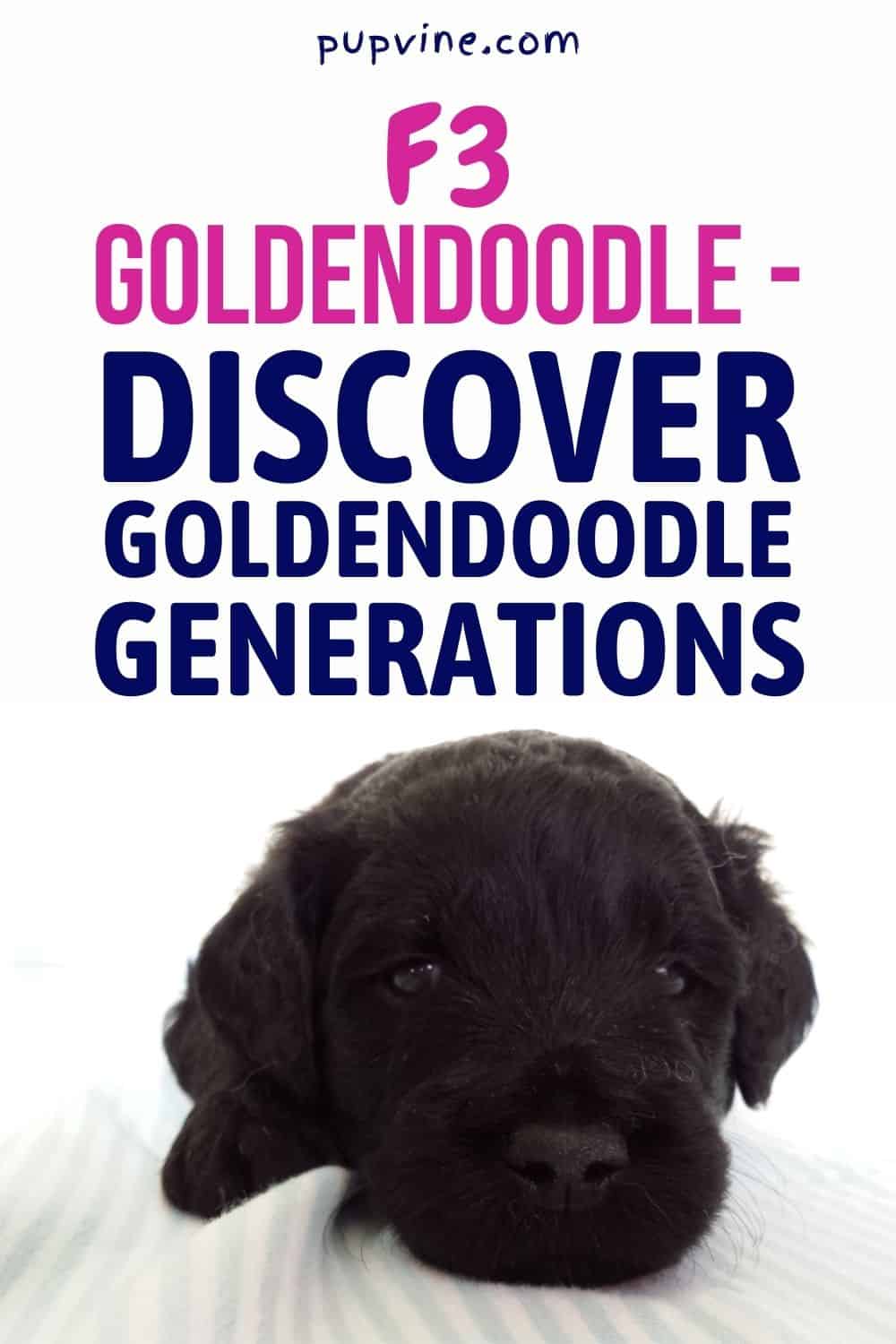Do Goldendoodle generations confuse you? Do you see these letters and numbers describing a Goldendoodle litter, but have no idea what they mean?
You’re not the only one. Many aspiring designer dog owners end up utterly drawn back when they see the letters describing their future pup.
What can you find out about your puppy when you see F1, F2B, Multigen, etc. in front of their name? How do you know if you should get an F1B, an F2BB, or an F3 Goldendoodle?
We’re here to help you!
These labels explain what generation a Goldendoodle, or any other hybrid dog for that matter, is.
They help you know if your pup is a direct offspring of a Poodle and a Golden Retriever, a descendant of two Goldendoodles, or if he has a bit more genes of one breed compared to the other one.
While this may sound complicated, it doesn’t have to be. After just a bit of insight, you will be able to use these labels without asking anyone for help!
If this is something that has been bothering you for a while, you’re in the right spot. We’ll explain all you need to know about Goldendoodle generations as well as and how to interpret them on your own.
Goldendoodle Breeding
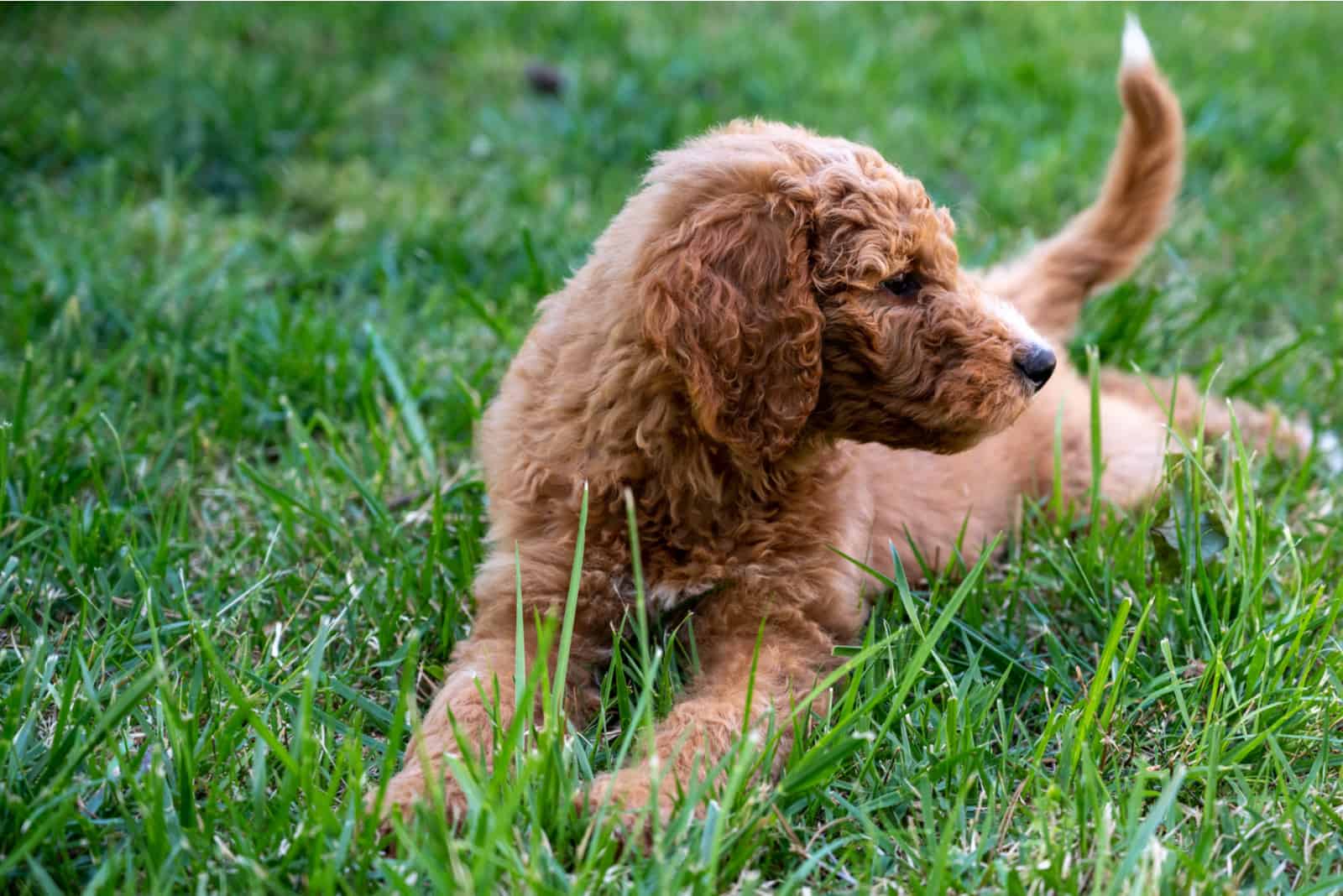
When you want to purchase a purebred dog, you want a puppy whose parents are of the same breed. At first glance, this is very simple and straightforward.
However, this isn’t the case with designer breeds, such as a Goldendoodle.
This is because designer breeds – also known as hybrid dogs – are a mix of two different dog breeds.
For example, you have Bernedoodles, a crossbreed of a Bernese Mountain Dog and a Poodle, a Labradoodle (a Labrador Retriever and a Poodle), and, of course, Goldendoodles, an offspring of a Golden Retriever and a Poodle, which we’ll talk about further on.
What’s challenging here is that not all crossbreeds of a Golden (or Labrador, Bernie, and so on) and a Poodle are the same perfect mix of both of their parents. There are no standardized features that these dogs should have, and their looks are a mixture of science and luck.
Good, reputable breeders usually have an idea of what kind of puppies they’ll get depending on their parents and a dog they plan on producing.
Most Doodles (Poodle crossbreeds) are bred with the intention of being hypoallergenic and low-shedding while maintaining that Teddy Bear appearance.
Well, getting the perfect Goldendoodle isn’t as easy as it seems, and it often takes several generations before a suitable dog is born.
Hybrid Vigor
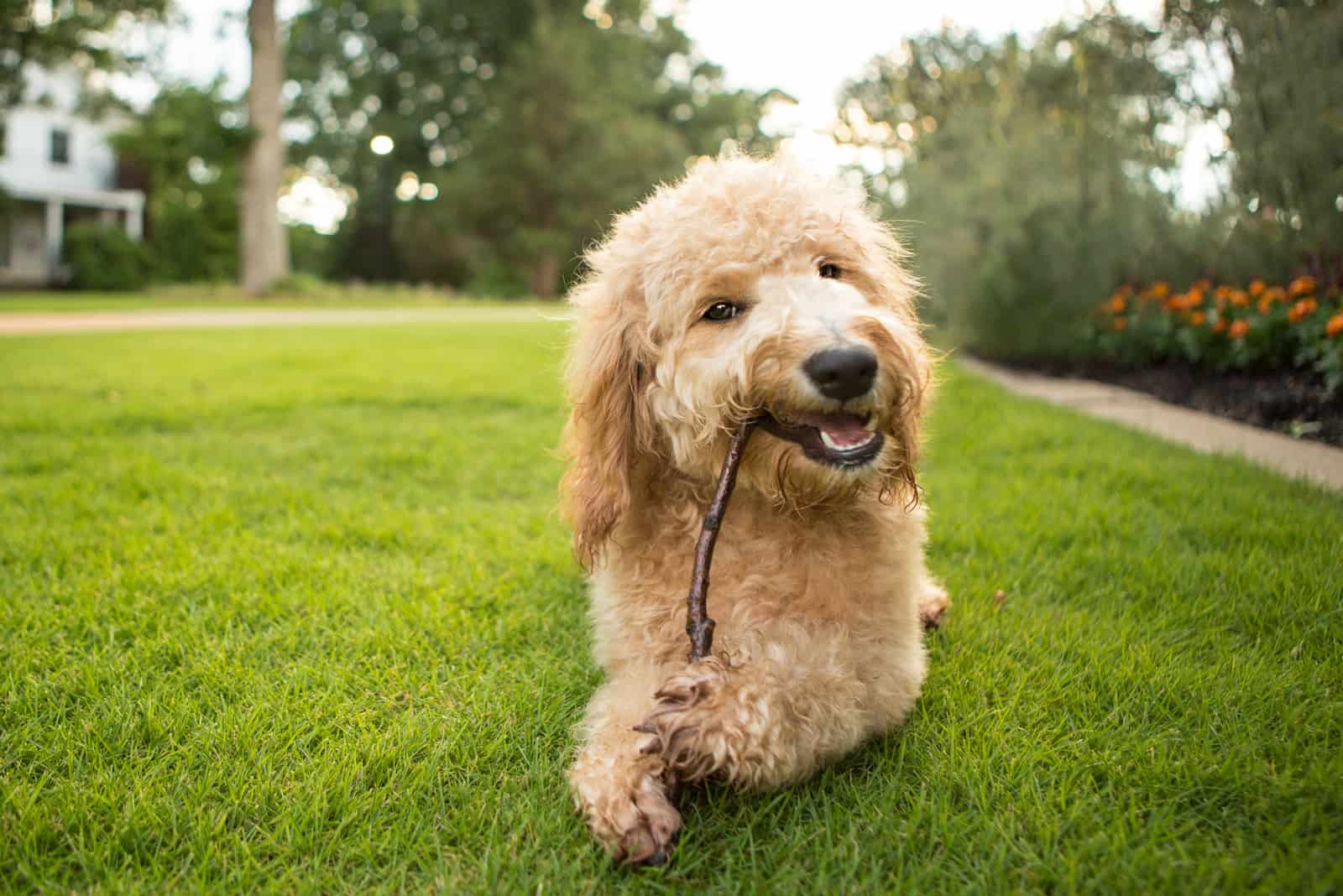
Another term you’ll need to learn in order to have a better understanding of Goldendoodle generations is hybrid vigor.
Many purebred dogs suffer from several genetic health issues because the breeding pool is limited, and it can be difficult to find healthy genes since many breeders are inbreeding their pups.
Once you introduce a new gene pool – something that happens if you cross two breeds together, chances are they have different sets of genetic problems – you’ll get healthier offspring.
This is known as Hybrid Vigor, and it is one of the reasons why Doodles are so popular.
Hybrid Vigor brings many benefits to designer dogs; however, this can depend on their generation. Why is that?
Plainly speaking, the higher percentage of a single breed that a dog has, the fewer benefits he gains from being a crossbreed. This means that a direct crossbreed of a Golden Retriever and a Poodle will have a stronger Hybrid Vigor than later generations, and in return, they’ll live a much longer life.
Of course, this doesn’t necessarily mean that the generations after the first one will have harmful genetic conditions. As long as the breeder is being mindful of what dogs he breeds and conducts proper DNA tests, there is no need for concern.
With reputable breeders, the chances of getting an unhealthy dog are down to a minimum.
Generation Labels Explained
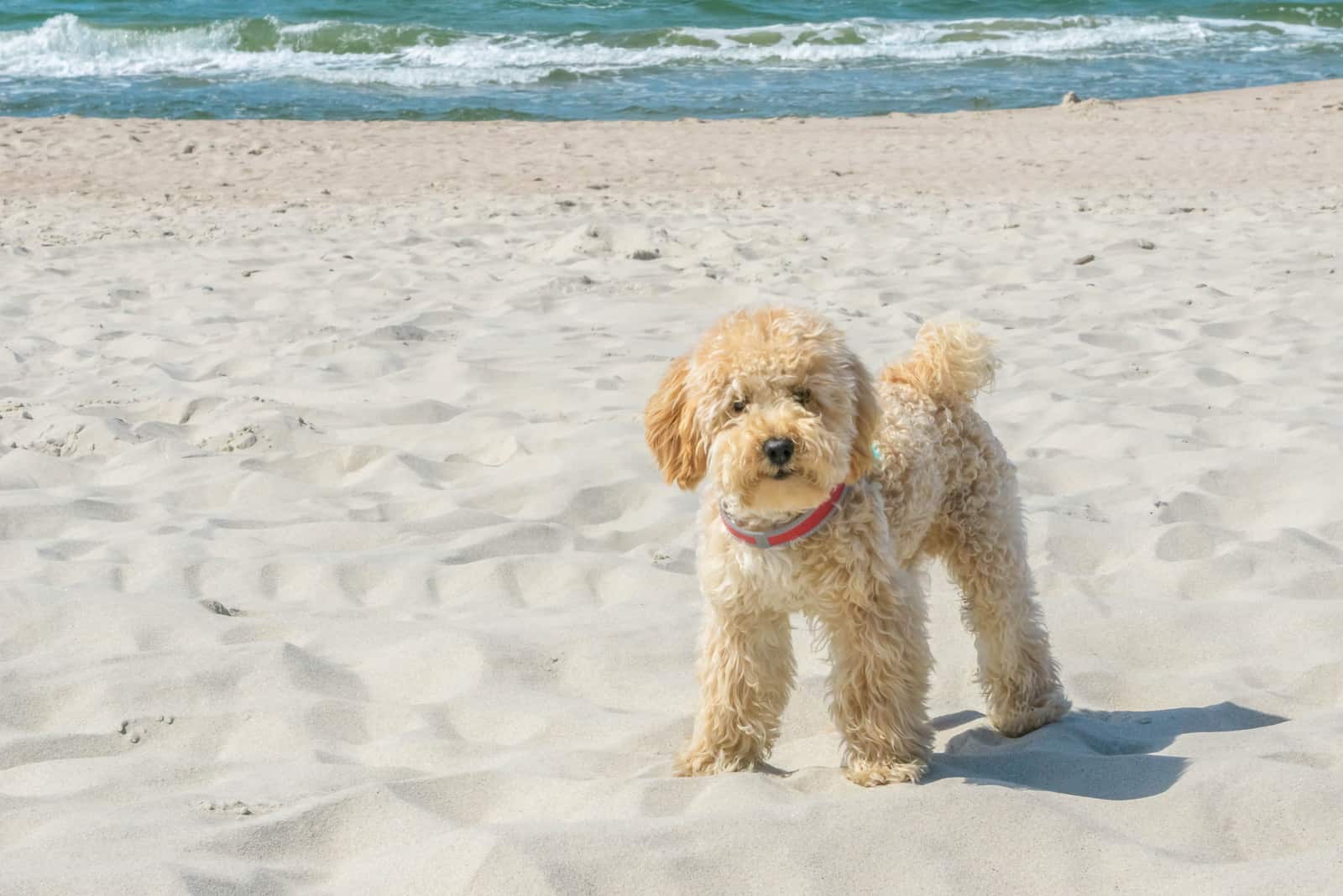
In order to understand what generation your Goldendoodle is, you need to understand the terminology breeders use to label their puppies.
While all the F’s and the numbers seem confusing, this is really straightforward once you get a hold of it and understand what everything means.
Every designer dog’s generation label starts with the letter ‘F’. The ‘F’ implies that your dog is a ‘Filial Hybrid’ or a crossbreed dog that originates from two purebred dogs.
The number means what generation the dog is. 1 implies the first generation, 2 implies the second generation, etc. This will be important later on.
Some Goldendoodle generations also have the letter ‘B’ after the number. This indicates a backcross or a generation cross.
A backcross is just a fancy term for breeding a Goldendoodle with a purebred Golden Retriever or, more commonly, with a purebred Poodle. In other words, you’re bringing back the genes of one parent breed.
To simplify things even more, whenever we talk about backcrosses in the next article, we’ll consider breeding a Goldendoodle with a purebred Poodle since this is what most breeders do.
Similarly, you may see two ‘B’s in a generation name. This means that two backcrosses have been made, and the Goldendoodle was backcrossed two times with (usually) a Poodle.
F1 Goldendoodle
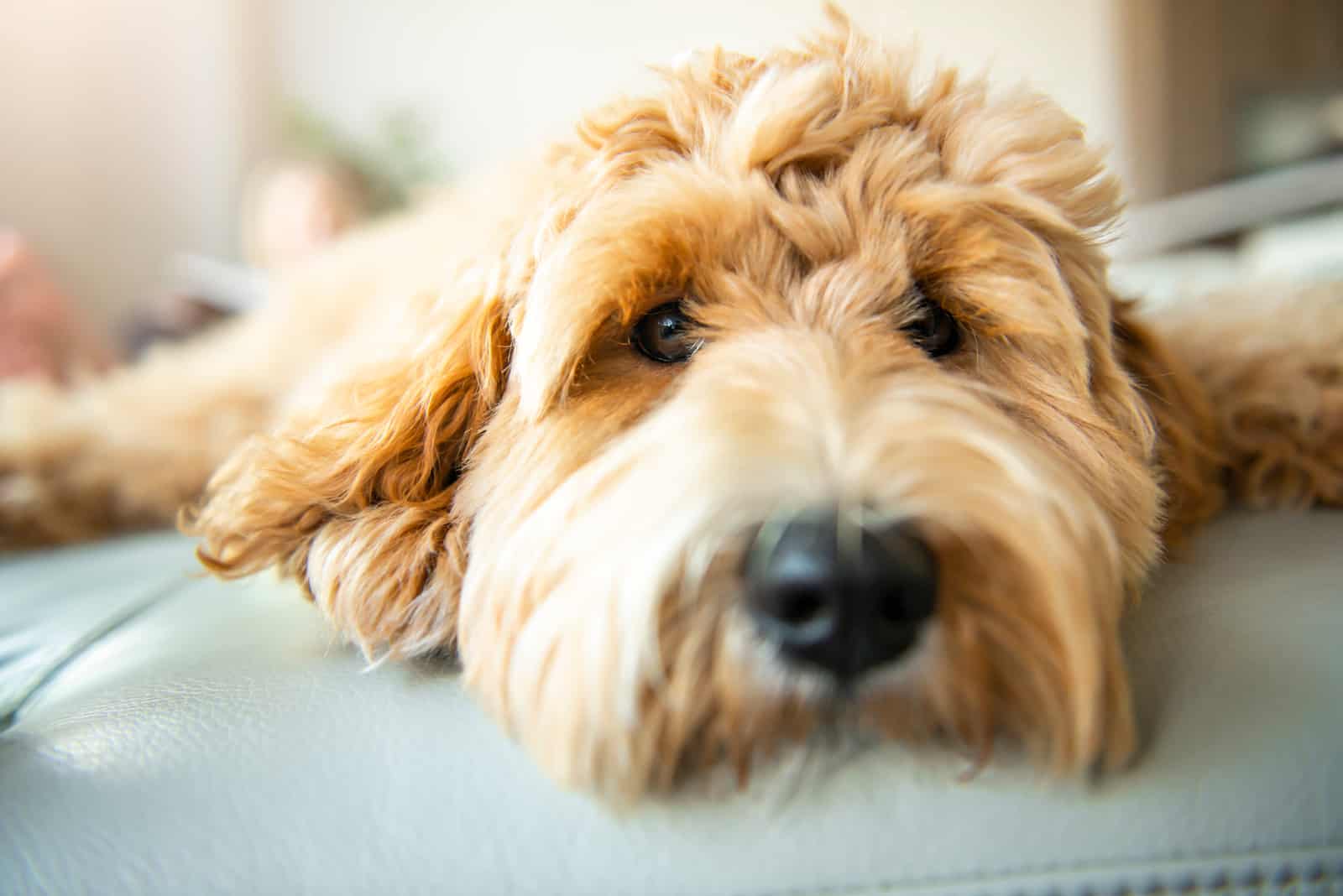
An F1 Goldendoodle is a first-generation crossbreed of a purebred Poodle and a purebred Golden Retriever. This is what most people think about when they think of Goldendoodles.
F1 Doods are 50% Poodles and 50% Goldens, which allows for a wide range of diversity when it comes to the way these dogs look and behave. For example, their coat type could be either straight, like the Retriever’s, curly, like the Poodle’s, or even something in between.
While F1 Goldendoodles will mostly shed less than Goldens, they’ll still experience a significantly increased amount of shedding than Poodles. Because of this, most allergy sufferers shouldn’t get Doodles from this generation.
However, compared to other Goldendoodle generations, F1 Doodles have large benefits from Hybrid Vigor. They won’t inherit too many health issues from their purebred parents and ancestors.
Mixed breeds overall have a decreased chance of being plagued by many diseases, and first generations are the healthiest overall. If you want a healthy pup, then F1 Goldendoodles are the way to go.
Another advantage of these Doodles is that they are much more affordable compared to later generations of Goldendoodles, and you can typically get them at a price of approximately $1000.
Of course, the exact price depends on many factors, such as your area, the breeder’s reputation, color, and size. A teacup Goldendoodle puppy will be much more expensive than those of a standard Goldendoodle.
Read More: Goldendoodle Growth Chart
F1B Goldendoodle
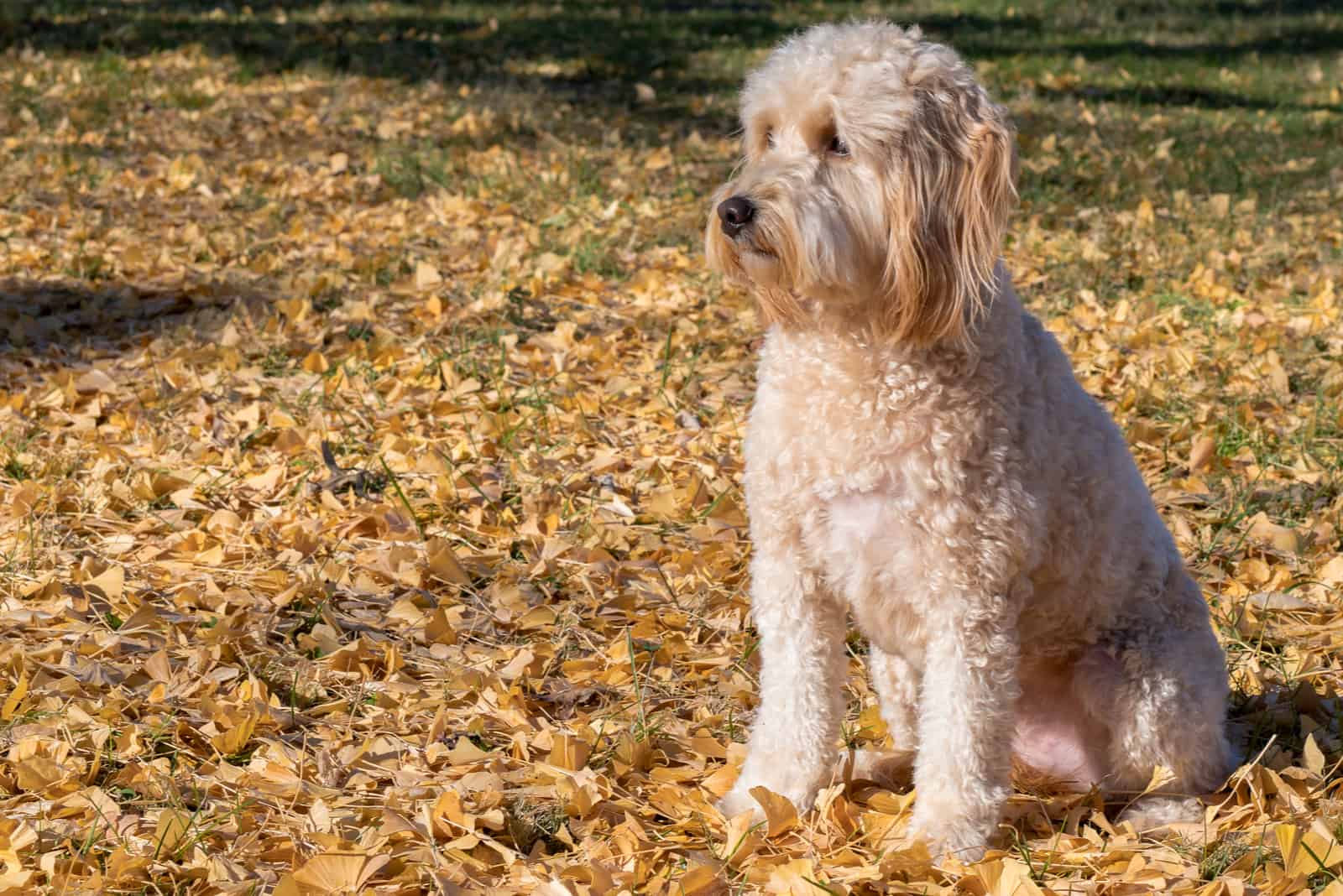
An F1B Goldendoodle is also known as a first-generation backcross Goldendoodle. This is an offspring of an F1 Goldendoodle and a purebred parent – which is, as we’ve mentioned before, usually a Poodle.
F1B Goldendoodles have much more Poodle traits than F1 Goldendoodles since they are approximately 75% Poodles.
Breeders prefer creating backcrosses as Poodles have many desirable traits, especially for people with mild allergies. This includes less shedding, which makes these dogs more hypoallergenic compared to the F1 generation.
This also means that these pups will look a lot more like Poodles than Golden Retrievers. They’ll mostly have a wavy coat that doesn’t shed, but is more prone to matting, and because of this, they require more grooming than the first generation.
Their prices vary from breeder to breeder, but they usually aren’t that much more expensive than F1 Goldendoodles.
Overall, depending on their coat color and pattern, as well as the breeder’s reputation and their parent’s bloodlines, these Doods cost between $1000 and $5000.
F1BB Goldendoodle
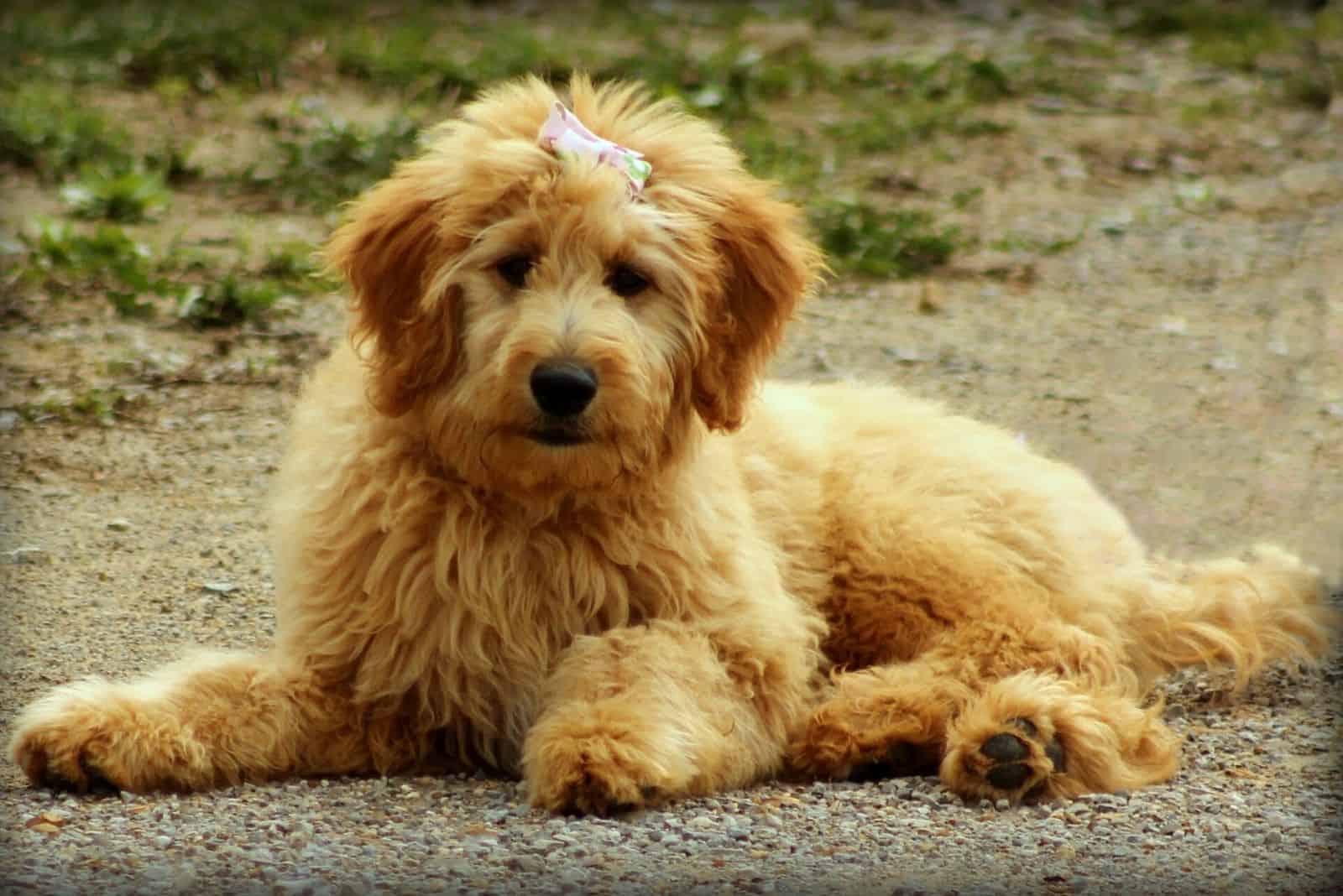
These Doodles are the second backcross of a Goldendoodle and a Poodle. This means that one of their parents is an F1B Goldendoodle, and the other one is a Poodle.
This is the best generation for people suffering from dog allergies. Not only do they produce a small amount of dander, but they are also almost entirely non-shedding, so you won’t have any issues keeping your allergies at bay.
Of course, no dog is truly hypoallergenic, and this is certainly a risk with designer breeds since you can never be completely sure which genes they have.
However, there usually isn’t too much variety when it comes to F1BB Doodles since they have so little Retriever blood in them.
Unfortunately, this also means that their coat looks a lot like a Poodle’s fur, so F1BB Goldendoodle owners should be aware that regular visits to a groomer are a must.
Since these Goldendoodles aren’t as common as their other cousins, they come at a slightly higher price. Still, they mostly stay within the $1000 to $5000 range.
F2 Goldendoodle
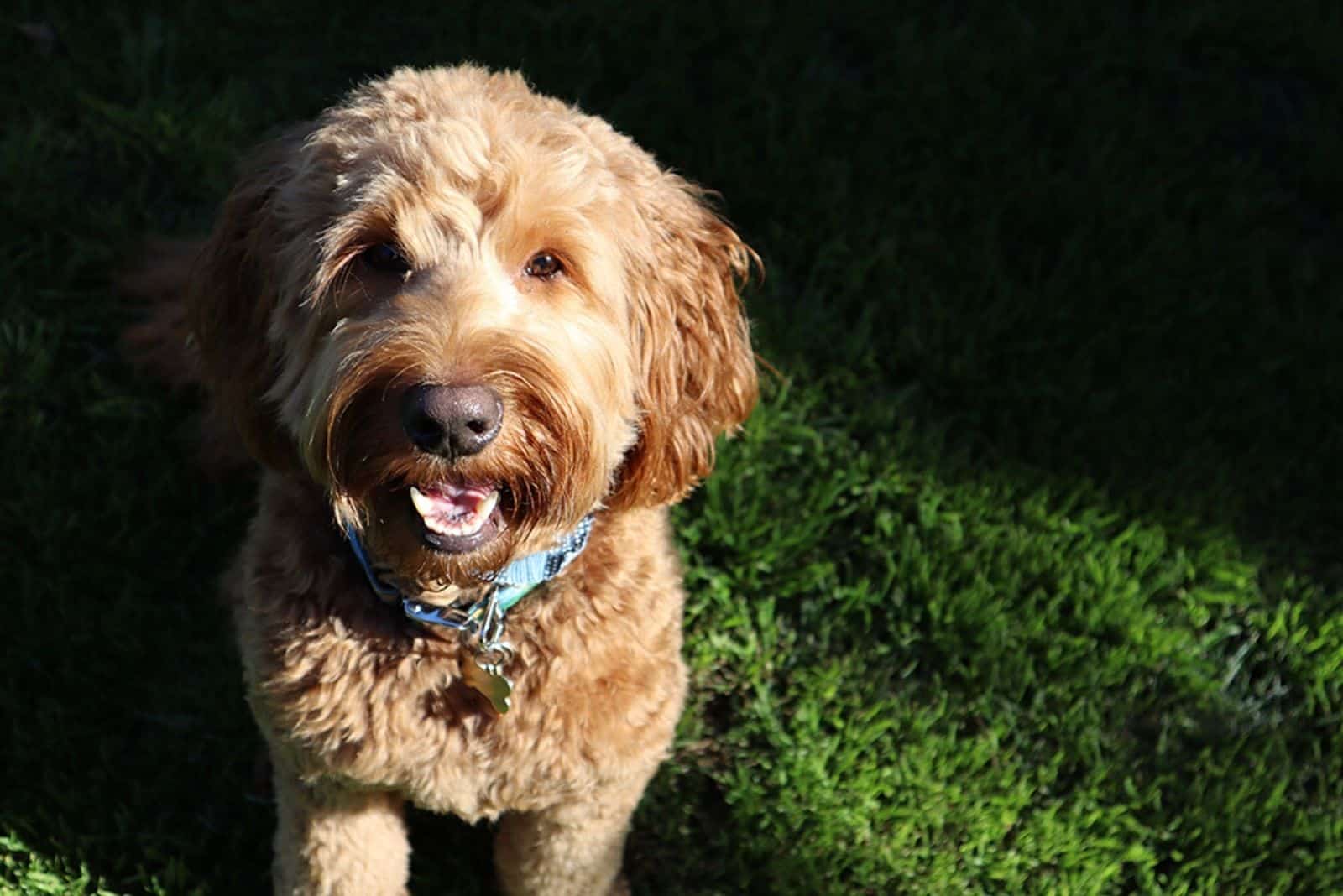
F2 Goldendoodles are the second generation of Goldendoodles. They can be bred in many different ways, so there is a lot of diversity in this generation.
For example, an F2 Goldendoodle can be bred in a standard way by mating two F1 Goldendoodles. However, a breeder might also mate an F1B Doodle with another F1B, or even an F1 Goldendoodle with an F2 Goldendoodle!
Pure F2 Goldendoodles are somewhat rare. Breeders aren’t too fond of raising them as this is the most unpredictable generation, both in appearance and personality.
Since you’ll keep their bloodlines 50/50, you will never know how the offspring will look. Sometimes, some hidden trait might exhibit itself and half of the litter will look nothing like either of their parents!
Also, this generation is not the best for allergy sufferers – but if you have never had issues with dog allergies and you want a pooch with a unique combination of traits, then F2 Goldendoodles should be amazing for you.
These Goldendoodles aren’t too expensive since breeders can’t guarantee any of their features.
F2B Goldendoodle

An F2B Goldendoodle is – you guessed it – a second-generation backcross of a Goldendoodle and a Poodle.
These dogs aren’t as unpredictable as regular F2 Goldendoodles since they’ll have more standard Poodle traits, which means they won’t vary as much as some different generations.
This also increases your odds of getting a hypoallergenic, low-shedding pup, which will help you breathe comfortably in your home. However, just as with any other backcross, this also means more brushing and groomer visits.
One thing you should notice is that some breeders won’t use the term ‘F2B’ to describe this generation of Doodles. Instead, they’ll simply call them ‘Multigen.’
The ‘Multigen’ label indicates that the Goldendoodle is a third or later generation. Some will also call these dogs ‘Multi-generation Goldendoodles.’
Once again, these are among the more expensive generations of Goldendoodles, so their cost can often go as high as $5000.
F2BB Goldendoodles
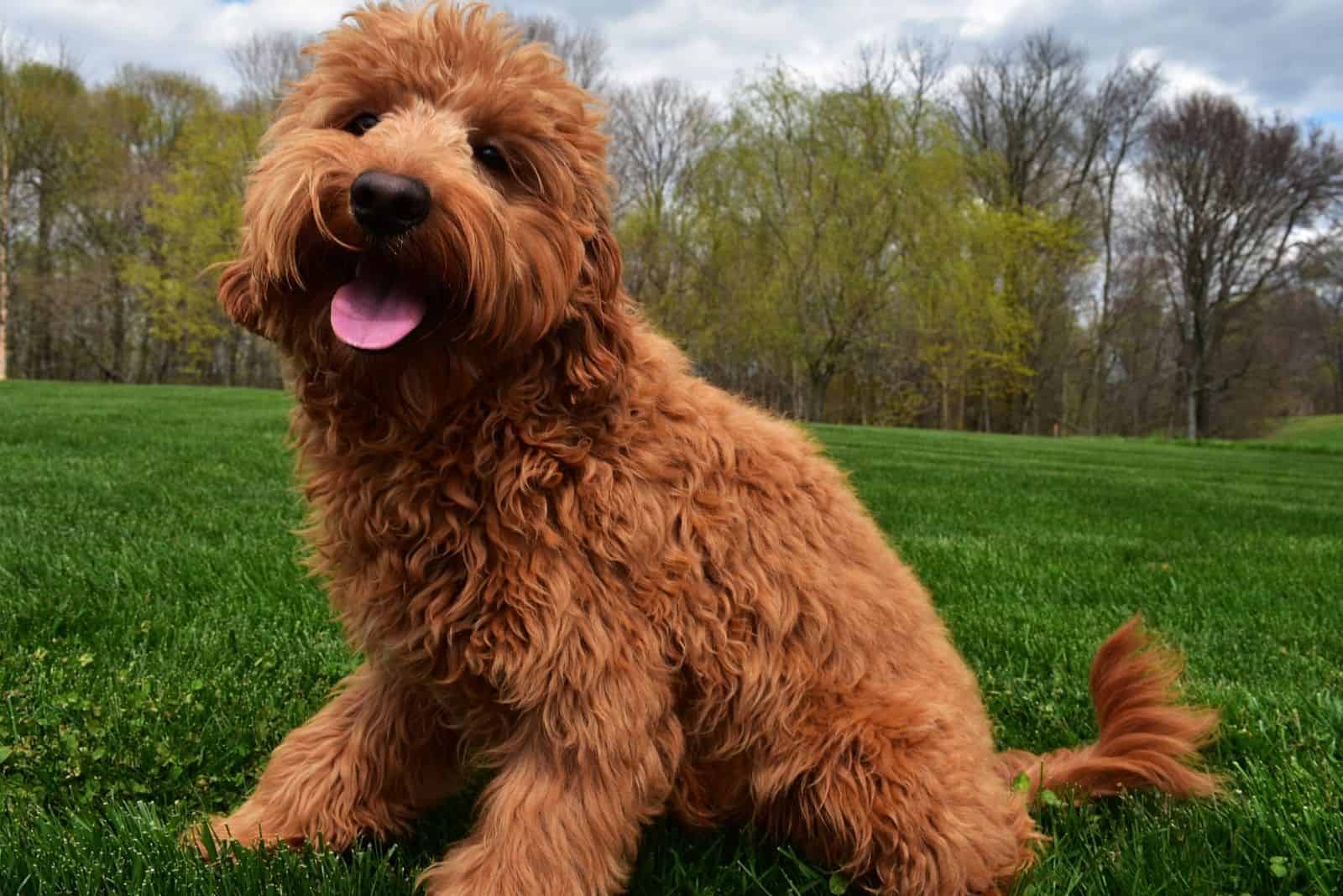
Similar to F1BB Goldendoodles, the F2BB is the second backcross of the second generation of Goldendoodles.
To get an F2BB Goldendoodle, you should breed an F2B Goldendoodle with a purebred Poodle. Because of this, these Doodles are also considered Multigen Goldendoodles.
Since its DNA is very close to the Poodle’s, this generation is excellent for people suffering from severe allergies due to a dog’s dander. While no one can guarantee you a hypoallergenic dog, these pups are unlikely to shed.
Also, most F2BB Goldendoodles will look almost entirely the same as Poodles since they’ve lost most of their Golden Retriever ancestor’s genes.
All of this also makes them quite expensive.
F3 Goldendoodle

F3 Goldendoodles, or Multi-generation Goldendoodles (or, shorter, Multigen) are quite rare since they can be extremely challenging to breed.
They are unpredictable and inconsistent, so breeders never know what to expect from F3 litters! It isn’t rare to have a few puppies with a curly coat while others will have fur that is entirely straight. The same goes for the amount of shedding.
These pups can be risky for allergy sufferers. While many will be hypoallergenic, others will have most of the traits of a Golden Retriever, which means plenty of shedding.
Also, they don’t have much advantage of Hybrid Vigor since they no longer have diverse DNA as some earlier generations.
In most cases, F3 Goldendoodles are the most expensive of all Goldendoodle generations, and they can oftentimes cost more than $5000!
Why Do Generations Matter?
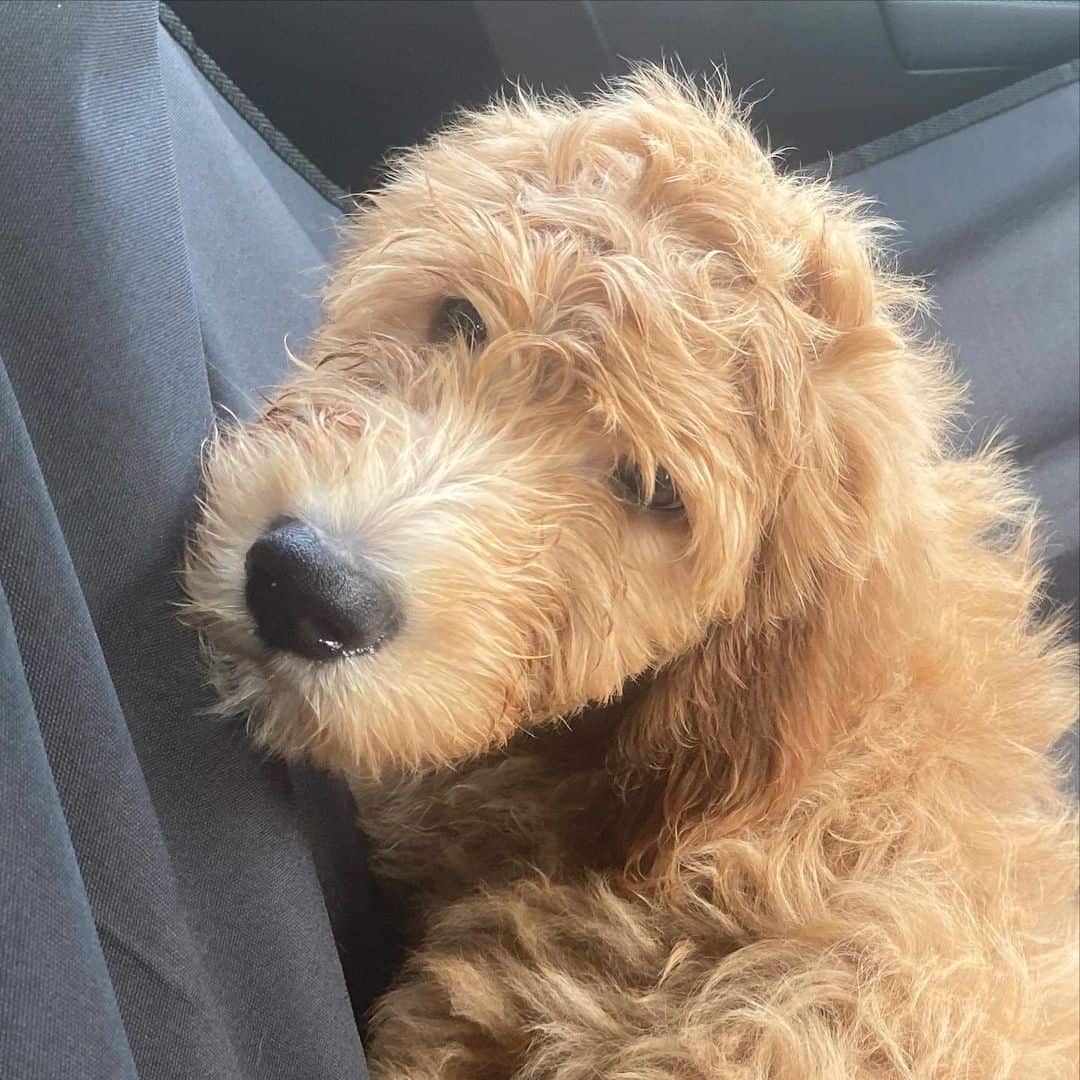
Photo from: @katieranae07
While generations might not be the most important feature for many dog owners, they still matter. A Goldendoodle’s generation might influence its physical characteristics, temperament, and any potential health issues due to the amount of Hybrid Vigor they have.
Not to mention that understanding a Goldendoodle’s generation is essential for allergy sufferers looking to get a dog that won’t shed too much.
Because of this, you should always be aware of what generation your Goldendoodle is.
Some generations are much easier to predict than others, so if you have dog allergies, it would be wise to talk to your breeder about this.
Another important thing you should ask your breeder is if they advertise their Doodles as ‘Multi-generation’ or ‘Multigen’ as this can mean many things. Are these F3 Goldendoodles, F2B, F1BB, and so on?
This can be of crucial importance to anyone looking for a hypoallergenic dog.
And, if you already have a Goldendoodle, but want to check what generation he is, there are several DNA tests that your dog can take. Some are even suitable for at-home use!
Knowing your Goldendoodle’s generation can help you prevent many health issues, and it is important for any dog owner.
Read Next: Is The Phantom Goldendoodle As Scary As The Phantom Of The Opera?
